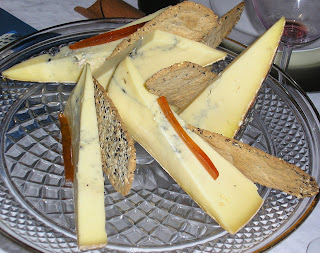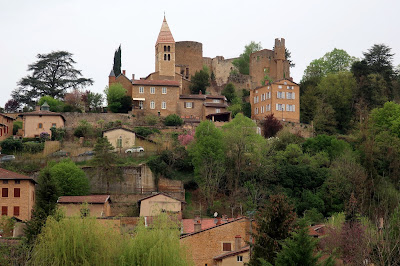The Architecture of a Meal
“You are invited to an evening of dining and conversation inspired by the creative genius of Zaha Hadid, Architect.”
I was surprised and delighted to be invited to a dinner party at Cathy Engel’s house with an architectural theme. At first, the twin themes of architecture and food appeared to be miles apart. But then I changed my mind.
What is architecture?
Wikipedia defines architecture, in part, as follows: “Architecture is both the process and product of planning, designing and constructing form, space and ambience that reflect functional, technical, social, environmental, and aesthetic considerations. It requires the creative manipulation and coordination of material, technology, light and shadow.”
Organizing a dinner party involves many of the same functions. You need to decide who to invite and how they will get along together. You plan a menu in terms of taste, appearance, culture, social expectations and availability. You set the table and establish the environment (lighting, music, furniture, dishes). Finally, at the end of the evening, you survey the remains and try to determine the success or failure of your dinner party.
Zaha Hadid
Cathy Engel was browsing through her husband’s architecture books, trying to decide on a theme for her next dinner party, when she came across a book about Zaha Hadid. Zaha Hadid was born in Baghdad, Iraq, and educated in England. She is the first woman architect to win the Pritzker Architecture Prize, an international award honouring a living architect for significant and consistent contributions to humanity and the built environment. Her firm is located in London, England, and has over 350 employees. She works on architectural projects around the world.
“She’s over 60, and she’s just hitting her stride,” says Cathy. “That’s very inspirational.”
Deconstructivism
Hadid is a proponent of deconstructivism, “an architectural style which contradicts the conventional methods of architecture to create a structure, which though aesthetically odd is functionally equivalent to the buildings made by general methods. . . . Deconstructivism focuses on changing the conventional rectilinear lines of a normal architectural building into non-rectilinear lines, transforming the external features of the building into distorted shapes and fragmented features.” (Bright Hub website)
Hadid’s website explains that her work integrates the natural landscape and geography with human-made systems through experimentation with cutting-edge technologies. It has been “hailed as architecture that transforms our vision of the future with new spatial concepts and bold, visionary forms.”
The meal
Cathy based each course of the dinner menu on a different architectural work by Zaha Hadid.
The first course was soup based on Malevich’s Tectonic. Malevich was an artist-philosopher who emphasized heavy black objects floating over lighter white objects. Hadid’s design, which includes a habitable bridge over the River Thames, uses technology to defy nature. (I was unable to find a good photograph of Malevich’s Tectonic; this graphic is of a Habitable Bridge design, again over the River Thames.)
The J.S. Bach Chamber Music Hall in Manchester, England, was designed to house solo performances of Bach’s music. Swirling ribbons wrap around the audience creating fluid spaces that merge and spill into each other as a “response to the intricate relationships of Bach’s harmonies.” The daikon radish strip around my Portobello mushroom (others ate steak) reminded us of a mobius strip, and it was illumined from below by a small tea lamp.
The dessert represents a deconstructed vision of Madrid’s central business district. Again, I couldn’t find a photo of the appropriate work, but I felt that this proposal for the Cardiff Bay Opera House contained a similar approach with geometrical objects abutting one another.
Standing ovation
Cathy’s architectural meal was greatly enjoyed by all of us who had the good fortune to be invited. I was far more aware of the shapes and patterns in the food, and we were never at a lost for a topic of conversation as we eagerly anticipated each course as it emerged from the kitchen.
Thank you, Cathy, for a great meal. I learned a great deal about both architecture and food.
Cathy Engel is the manager of the Bulk Cheese Warehouse, and she loves cheese.
The architectural photographs are from Zaha Hadid’s website.














Comments